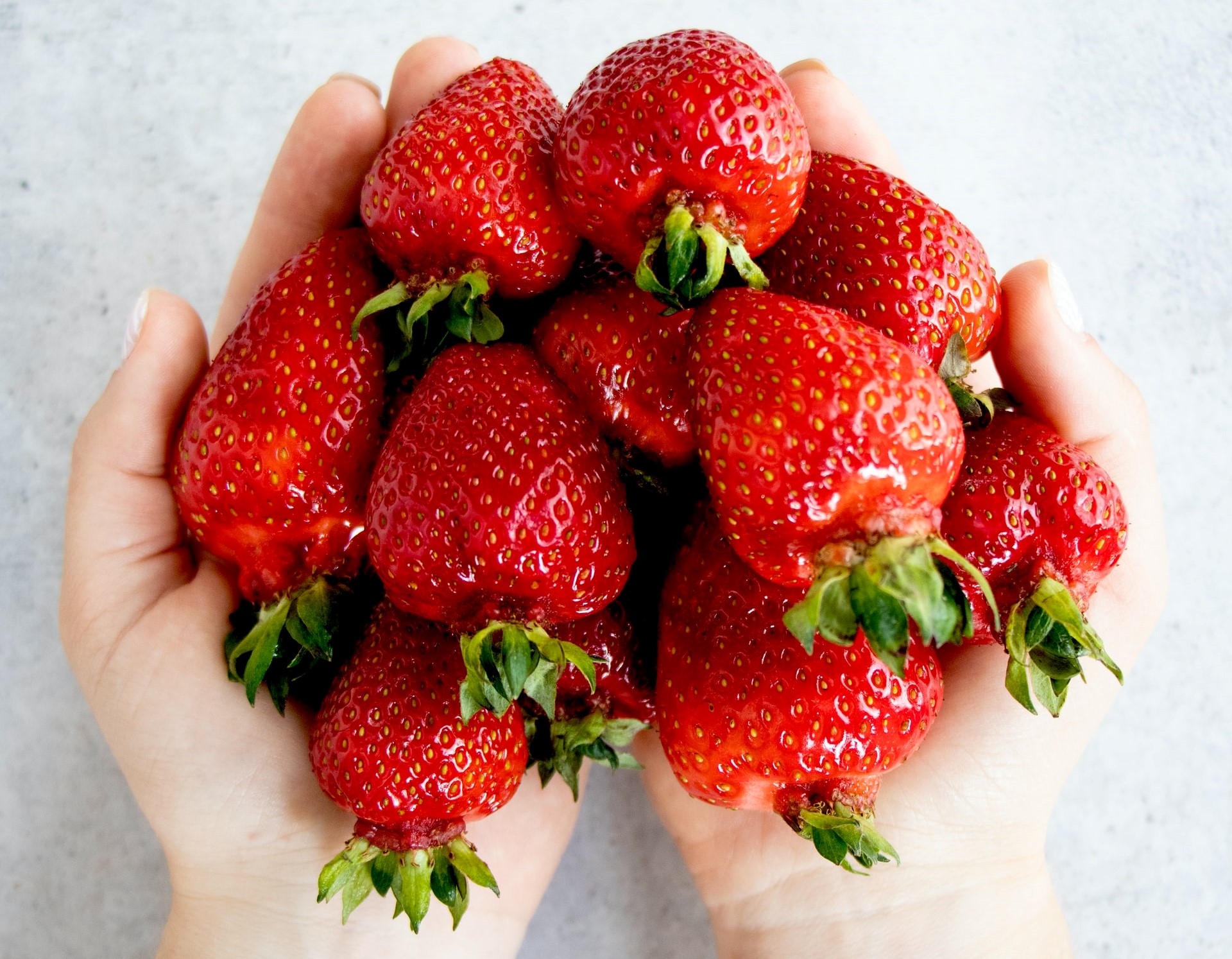Strawberry cultivation systems
Strawberries can be grown in several ways, so there are two basic methods of cultivation: cultivation in the open field and cultivation in a protected area.
When grown outdoors, strawberry can be grown as a pure crop, intercrop, as annual or perennial production (up to 3 years) with irrigation. Outdoor cultivation is still the predominant and economically most important method of strawberry cultivation in our country.
Nowadays, planting in rows/strips is mostly used in modern cultivation. In relation to the classical way of cultivation, in most countries with developed production, this is the standard cultivation system. They are usually two-row beds that can be raised or flat. The beds are placed at an inter-row distance of 80 to 100 cm, while the rows on the bed are spaced 30 to 40 cm apart. Plants in a row are 20 to 25 cm apart. Raised beds are preferred because they avoid the risk of rainwater retention. The use of black PE foil is also mandatory.
Cultivation in protected areas has one purpose, and that is the earlier ripening of strawberries, which enables an earlier offer of fruits on the market. By installing plastic tunnels and greenhouses of various dimensions, an increase in air temperature with smaller daily fluctuations is achieved, which leads to earlier ripening of strawberries. The disadvantage of this method of cultivation is the increased production costs.


Strawberry fertilization
Strawberry is a culture that is completely different from other fruit types in terms of production and fertilization. But it is common, as with all other fruit crops, that records of fertilizer use should be kept more accurately.
Before planting strawberries, the soil should be fertilized with:
- 100 kg/ha of nitrogen
- 100 kg/ha of phosphorus
- 200 kg/ha of potassium
In the first year:
Before planting, it should be fertilized with 650 kg/ha of NPK 5-20-30 (65 g/m2).
It is recommended to carry out further fertilization with crystal fertilizers through an irrigation system with:
300 kg/ha NPK 20-10-10 or 60 kg/ha NPK 10-30-20.
In the second year:
Fertilize in early spring with 200 kg/ha NPK 15-15-15.
After flowering, feed with 190 kg/ha NPK 5-20-30.
In autumn, feed with 250 kg/ha of NPK 5-20-30.
Fertilization in the third and subsequent years is the same as in the second.


Strawberry harvest
Preparation for the harvest begins during the winter in order to provide all the necessary material, labor, equipment and sales in time.
Strawberries are still harvested by hand in standard wooden containers (crates) in which plastic containers of 250 or 500 g are placed. Strawberries for fresh consumption must be picked with the stem. The best quality is given by fruits that are fully ripe and well colored, but such fruits lack firmness and do not tolerate transportation well. If strawberries are delivered to more distant markets, it is required that about 2/3 to 3/4 of the surface of the fruit is colored, i.e. that the strawberries only have a white top. Fruits for industrial processing or freezing must be fully ripe and harvested without the stem. Harvesting is done several times, usually every second or third day. However, high temperatures accelerate the ripening of strawberry fruits, and the ripening can be so sudden that suddenly there is a need for a large number of pickers in order to “catch” the most favorable stage of maturity. In such cases, the smaller fruits are left to ripen, and when they ripen, they are harvested completely ripe for industrial processing, while the larger fruits are harvested at the most favorable stage of ripening. Ultimately, the picker’s performance depends on the picker’s skill and commitment.













































